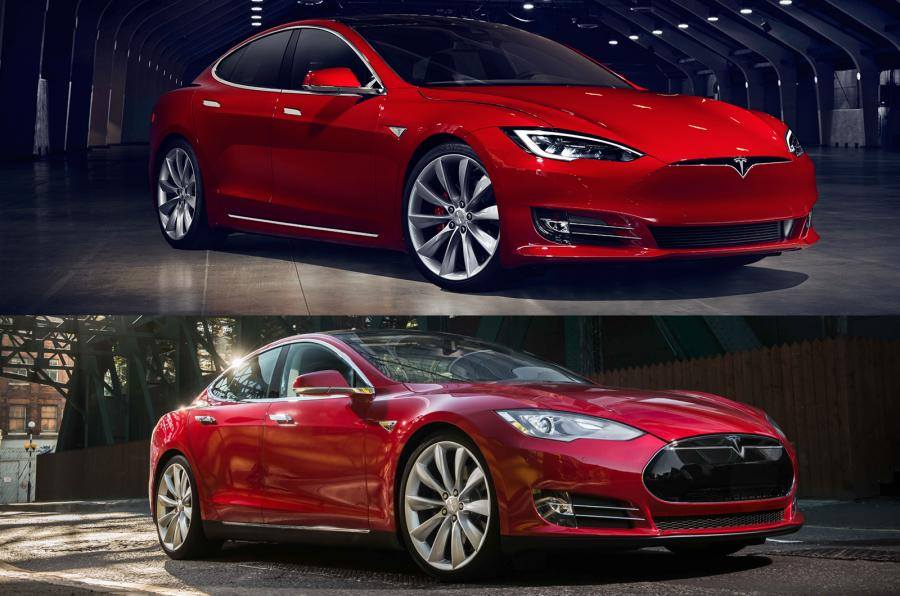
Automotive industry life cycle analysisThis Life Cycle Assessment study was commissioned by EUROBAT, ILA, ACEA, JAMA and KAMA, which with each other represent the majority of Europe’s battery and automobile manufacturers, along with Japanese and Korean automobile producers and the international lead business. If I use the automotive business as an example in this case, acoustic needs and overall performance measures are defined for all styles, components and elements so that a car manufacturer can make sure a level of acoustics which is anticipated for every class of vehicle. These requirements have to be met whilst also preserving the further cost, manufacturing and style targets.
Just before creating an environmental functionality metric, it is crucial to evaluate how the metric will be utilized. Contemplating the complexity of the automotive industry, easy empirical metrics may possibly offer a restricted view of overall environmental performance. Misuse of such a metric could be more confusing than not using it at all. For instance, a metric such as pollutant generated per car made could be misleading if it have been employed to evaluate plants either inside a firm or amongst businesses, due to the fact every single plant could have various starting materials and processes even if every single is making the very same finish item. For that reason, clear boundaries need to be defined for any comparison and the outcomes of such comparisons meticulously evaluated.
The market expects to face new environmental standards. Though regulations have led to some innovations, regulatory approaches do not elicit the most inventive solutions. Versatile incentive-primarily based approaches will a lot more properly stimulate future innovations. Threat-based approaches, which prioritize concerns on the basis of environmental or overall health risks, are gaining acceptance in the industry as a implies of defining environmentally considerable emissions. These can also act as a basis for setting standards globally. Presently, businesses manage differences in global standards and regulations by harmonizing and standardizing environmental practices across geographical, political, and cultural boundaries. Such steps may possibly consist of instituting environmental auditing, waste handle, therapy facility design and style, pollution prevention, waste minimization, resource conservation, and threat reduction applications.
The Six Trends Driving Change In The Automotive Industryautomotive industry life cycle analysis
automotive industry life cycle analysisThis Life Cycle Assessment study was commissioned by EUROBAT, ILA, ACEA, JAMA and KAMA, which collectively represent the majority of Europe’s battery and automobile manufacturers, along with Japanese and Korean automobile companies and the international lead industry. Industrial Environmental Efficiency Metrics identifies the most valuable metrics primarily based on case research from four industries-automotive, chemical, electronics, and pulp and paper-and includes specific corporate examples. It contains goals and recommendations for public and private sector players interested in encouraging the broader use of metrics to boost industrial environmental overall performance and those interested in addressing the challenging issues of prioritization, weighting of metrics for meaningful comparability, and the longer term metrics needs presented by sustainable improvement.
We apply numerous refinements of survival regression to assess the final results of some fundamental specifications primarily based on item life cycle theory for the case of a information set of the German automobile business. The methods applied pay attention to biases in the coefficient estimates and the normal errors, the discrete nature of the duration information and the presence of unobserved heterogeneity. Robust estimation strategies are also applied. We discover that that the coefficient estimates and regular errors are not a lot affected by applying the renewed estimators. The substantial outcomes of a prior study with the exact same data are unchanged.
The biggest point-supply emissions in the automotive sector are volatile organic compounds (VOCs) employed as paint solvents. Fifty solvents identified in paints and adhesive solvents are amongst the 189 hazardous air pollutants regulated under Title III of the Clean Air Act Amendments of 1990. VOC emissions from these solvents take place in the course of application, curing, and gear cleaning operations. A number of revolutionary paint technologies aimed at minimizing the VOC burden linked with traditional solvent-base paint are emerging. Table four-1 shows the targets, metrics utilized, and outcomes of study conducted by the USCAR Low Emission Paint Consortium and a number of other cooperative analysis and development programs.
Market Life Cycle Evaluationautomotive industry life cycle analysis
automotive industry life cycle analysisThis Life Cycle Assessment study was commissioned by EUROBAT, ILA, ACEA, JAMA and KAMA, which together represent the majority of Europe’s battery and automobile manufacturers, along with Japanese and Korean automobile manufacturers and the international lead sector. The NPD process follows the stage-gate model, which is the method of creating new goods in a funnel system. Right after every single stage of the improvement approach is comprehensive, the product is passed by way of a management-authorized gate ahead of it can go onto the next stage. NPD passes through the 4 primary phases of screen, development, test, and launch. You can repeat a stage multiple times based on the demands of the solution in development. Employing a PLM overview permits for accelerated innovation and increases the accuracy of these stage-gate choices simply because it ensures managers have all of the data accessible regardless of its point of origin.
The automotive industry produces vehicles that several regard as necessities in the contemporary globe. As a outcome, the industry’s environmental targets are strongly interwoven with these of society and government. Considerable engineering challenges lie ahead. In the near term, demands for far more fuel effective cars are expected to grow as nations around the globe try to minimize CO2 emissions to address issues about worldwide warming. Meeting the demand for private mobility on a global scale and addressing the related site visitors congestion difficulties will pose an added challenge and add to the complexity of building relevant environmental performance metrics to guide selection producing.
IS is scaleable and versatile, and can be tailored to the distinct wants of each business. Examples are: SAP Aerospace and Defence, SAP Automotive, SAP Banking, SAP Chemical substances, SAP Customer Goods, SAP Engineering and Building, SAP Telecommunication, SAP Utilities, SAP Service Provider. Total main energy use over the life of a vehicle. Source: U.S. Automotive Supplies Partnership, Life-Cycle Assessment Special Topics Group (1997).
International Journal Of Automotive Technologies And Managementautomotive industry life cycle analysis
automotive industry life cycle analysisThis Life Cycle Assessment study was commissioned by EUROBAT, ILA, ACEA, JAMA and KAMA, which with each other represent the majority of Europe’s battery and automobile manufacturers, along with Japanese and Korean automobile producers and the international lead sector. Cars are a substantial supply of GHG emissions. Tailpipe emissions of light duty automobiles alone will account for 10% of international CO2 emissions. Legislators worldwide are addressing this challenge by setting progressive automotive GHG emission limits, fuel economy standards or a combination of each. To conduct joint R&D programs to lessen or eradicate solvent emissions from automotive painting systems and to accelerate the availability of low-emissions painting technology. The initial concentrate is on powder-painting technology.
of the recycled parts and components becomes inputs to numerous automotive processes the rest is used elsewhere in the economy. Every year roughly ten million automobiles, buses, trucks, and motorcycles are processed by dismantlers, who supply 37 percent of the nation’s ferrous scrap (American Automobile Makers Association, 1994). On the record industry side, they just have to get utilised to a “Extended Tail” company model (generating most of their money off of very modest sales of a big quantity of titles, rather than boffo sales of a modest quantity of titles). This is a lot simpler when you never have to manufacture, ship and warehouse physical media.
Lee, R., M. Prokopyshen, and S. Farrington. 1997. Life cycle management case study of an instrument panel. Paper No. 971158 in the Proceedings of the Total Life Cycle Conference, Society of Automotive Engineers, April six. As the automotive market is on the brink of a key electric transition, environmental performance of EVs has become a highly debated subject. This study and briefing address two essential aspects of this debate, namely the climate impact of EVs and the use of critical metals, which includes uncommon earth minerals.




